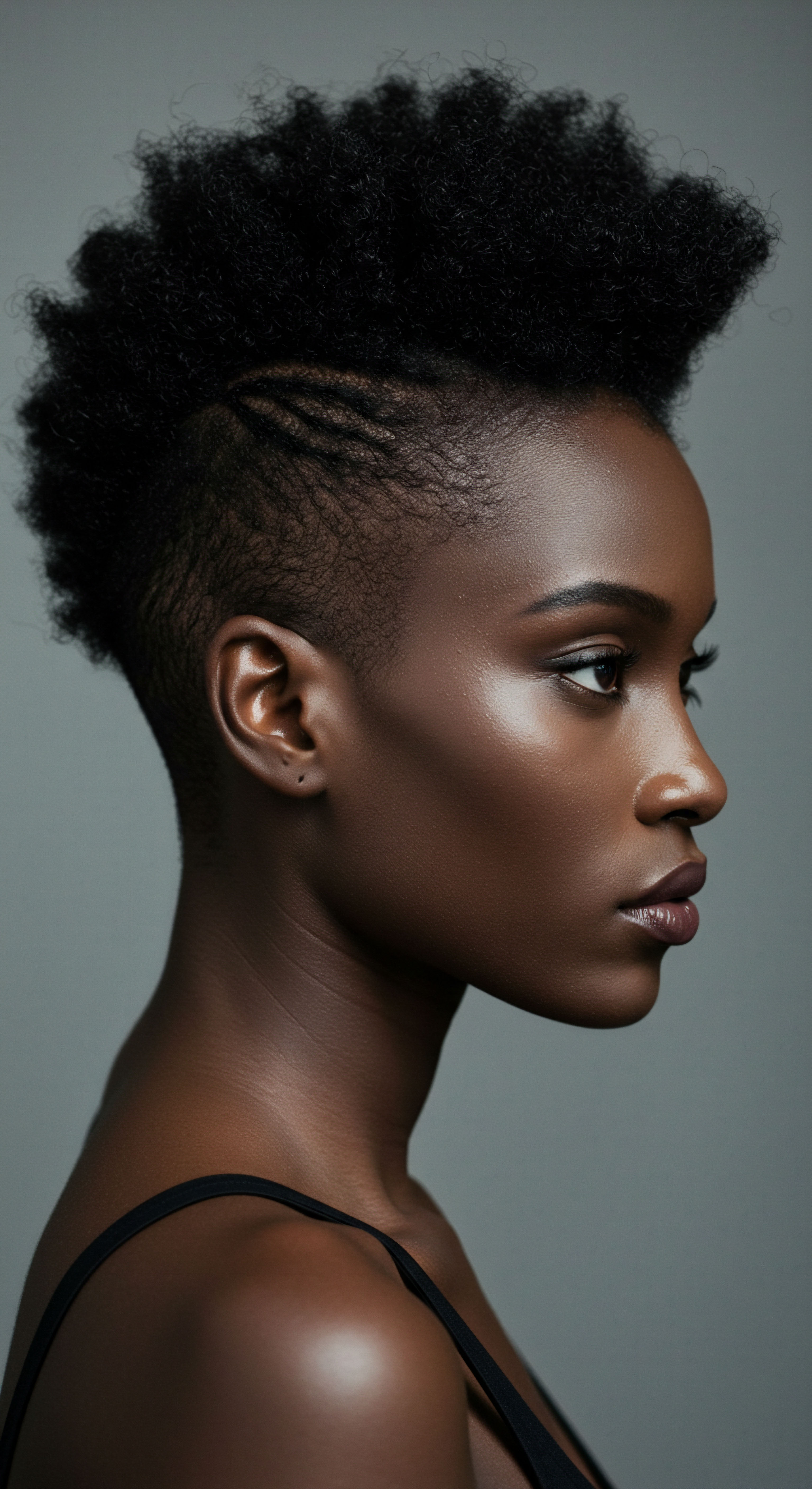
Roots
The journey into understanding our hair, especially textured hair, often begins with a deep, quiet wonder about its very being. How does something so seemingly delicate hold such strength, such character, such memory? For generations, across cultures, hair has been a crown, a statement, a silent keeper of stories. When we speak of caring for it, we are not simply discussing superficial treatments; we are touching upon a legacy, a personal connection to something deeply structural.
This contemplation leads us to the heart of ingredients, to questions like ❉ can something as finely rendered as hydrolyzed silk protein truly weave itself into the very core of a hair strand, offering benefits beyond mere surface adornment? To answer this, we must first look beneath the visible, into the microscopic architecture that gives hair its life.
The hair shaft, that visible part extending from our scalp, stands as a marvel of biological engineering. Its outermost layer, the Cuticle, consists of overlapping, flattened cells, much like shingles on a roof. These cuticular scales provide protection, a first line of defense against the external world. Beneath this protective shield lies the Cortex, the hair’s primary structural component.
This is where the hair’s strength, elasticity, and color reside, composed predominantly of tightly packed keratin proteins. At the very center of some hair types, a medulla may be present, though its precise function remains a subject of ongoing scientific inquiry. Understanding these distinct layers is paramount when considering how any external substance might interact with, and potentially penetrate, the hair.
For textured hair, these architectural details carry even greater significance. The unique helical and elliptical cross-sections of coily and curly strands mean the cuticle layers can be naturally more lifted in certain areas, potentially offering more points of entry, yet also making them more susceptible to moisture loss and external damage. The very act of curling and coiling places inherent stress on the hair shaft, particularly at the bends, rendering these areas more vulnerable to mechanical friction and breakage. This inherent structural variability means that the interaction of ingredients, including proteins, with textured hair is a conversation of subtle differences and unique considerations.
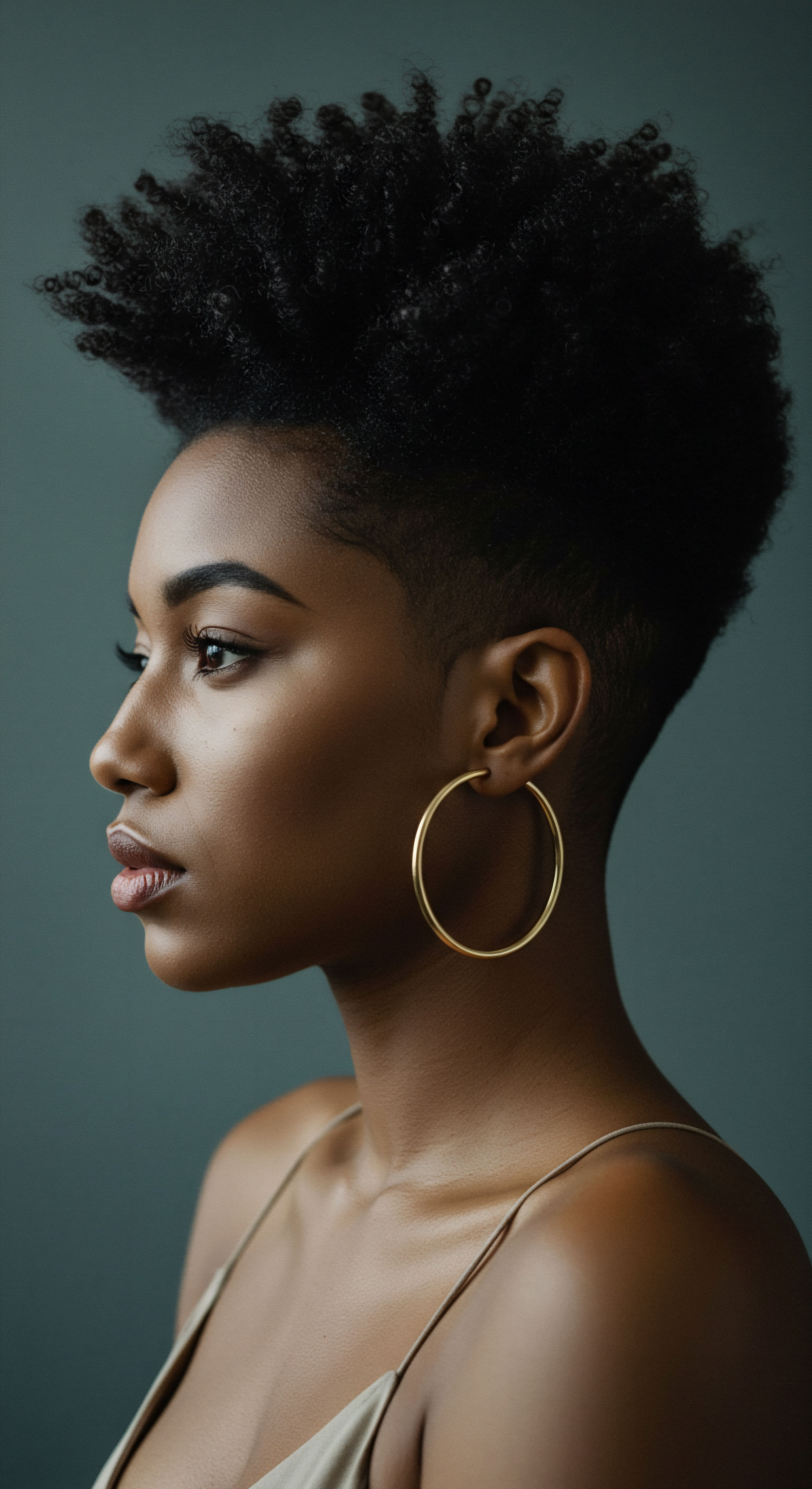
The Hair Shaft’s Microscopic Design
Our hair, in all its varied forms, shares a fundamental biological composition. It is a filamentous appendage, primarily composed of a protein called Keratin. This fibrous protein provides hair with its remarkable tensile strength and resilience.
The arrangement of keratin proteins within the cortex, bundled into macrofibrils and microfibrils, gives hair its characteristic elasticity and ability to stretch before returning to its original shape. When hair becomes compromised, perhaps through environmental exposure, chemical treatments, or daily styling, these keratin structures can suffer, leading to weakness, porosity, and a diminished appearance.
The outermost layer, the cuticle, is the hair’s protective armor. It is a translucent, multi-layered structure of dead, overlapping cells, all pointing towards the hair’s tip. An intact cuticle lies flat, creating a smooth surface that reflects light, resulting in a healthy sheen. This smoothness also reduces friction between hair strands, preventing tangling and minimizing mechanical stress.
When the cuticle is raised or damaged, the hair feels rough, appears dull, and becomes more prone to tangling and breakage. The integrity of this layer directly influences how effectively moisture is retained within the hair shaft and how external agents interact with the internal cortex.
The hair shaft’s intricate architecture, particularly its cuticle and cortex, governs how external substances like proteins interact with and potentially benefit its internal structure.
Beneath the cuticle, the cortex forms the bulk of the hair fiber. It consists of cortical cells packed with keratin proteins, melanin granules (which give hair its color), and various other cellular components. The keratin within the cortex is highly cross-linked by disulfide bonds, which contribute significantly to hair’s strength and shape memory.
Any disruption to these bonds or the protein structure within the cortex can compromise the hair’s overall integrity, leading to issues such as reduced elasticity and increased susceptibility to breakage. The question of whether external proteins can truly mend or bolster these internal cortical structures is at the core of understanding their utility.

Can Hair Be Internally Repaired?
The notion of “repairing” hair internally carries a particular weight, especially for those who have experienced significant damage. Unlike living tissue, hair, once it emerges from the scalp, is biologically inert. It cannot heal itself in the way skin or muscle can.
This fundamental biological reality means that any “repair” offered by cosmetic products is, by definition, a temporary measure, a way of mitigating damage and improving the hair’s appearance and feel. The challenge for cosmetic science lies in creating formulations that can adhere to, fill gaps in, or otherwise augment the hair’s existing structure, even if only for a limited duration.
When hair is damaged, its outer cuticle can lift, exposing the cortex. The internal protein matrix can become fragmented, creating voids and increasing porosity. Products aiming for “internal benefits” seek to address these issues.
This might involve depositing conditioning agents or proteins into these compromised areas, temporarily smoothing the cuticle, or providing a scaffold for the hair’s existing proteins. The efficacy of such interventions depends heavily on the size and chemical properties of the ingredients, as well as the condition of the hair itself.
Understanding the distinction between true biological repair and cosmetic enhancement is essential for setting realistic expectations. While cosmetic products cannot reverse damage in a biological sense, they can certainly improve the hair’s condition, making it feel stronger, look healthier, and become more manageable. The ongoing pursuit in cosmetic science is to create formulations that offer the most durable and effective temporary improvements, mimicking the appearance and tactile qualities of healthy hair as closely as possible.
- Cuticle ❉ The outermost protective layer, composed of overlapping cells.
- Cortex ❉ The primary structural component of hair, rich in keratin proteins.
- Keratin ❉ The fibrous protein that provides hair with its strength and elasticity.

Ritual
Our hair care rituals are more than just routines; they are acts of care, moments of connection with ourselves and our heritage. From the rhythmic parting of coils for a protective style to the gentle application of a conditioning treatment, each step holds intention. Within these practices, certain ingredients rise to prominence, whispered about for their restorative powers. Hydrolyzed silk protein is one such ingredient, often hailed as a hero for damaged strands.
But how does this finely processed protein truly interact with our hair during these cherished moments of care? This section explores the practical applications and perceived benefits of hydrolyzed silk proteins, moving from the foundational understanding to the lived experience of their use.
Hydrolyzed silk protein originates from natural silk fibers, typically from the silkworm, Bombyx mori. The process of Hydrolysis breaks down the larger, intact silk proteins (fibroin and sericin) into smaller fragments, peptides, and amino acids. This reduction in molecular weight is crucial, as it theoretically allows these smaller components to interact more effectively with the hair shaft. Without hydrolysis, the large silk protein molecules would simply sit on the hair’s surface, offering minimal, if any, lasting benefit beyond temporary film formation.
In hair products, hydrolyzed silk protein is valued for its conditioning and film-forming properties. It is often found in shampoos, conditioners, leave-in treatments, and styling aids. When applied, these smaller protein fragments are believed to deposit onto the hair surface and, in some cases, to penetrate the outer layers of the hair shaft.
Their presence can contribute to a smoother cuticle, reduced friction, and an improved feel. For textured hair, which can be prone to dryness and mechanical damage due to its structural configuration, these surface-level benefits are particularly welcome, helping to enhance manageability and reduce the appearance of frizz.
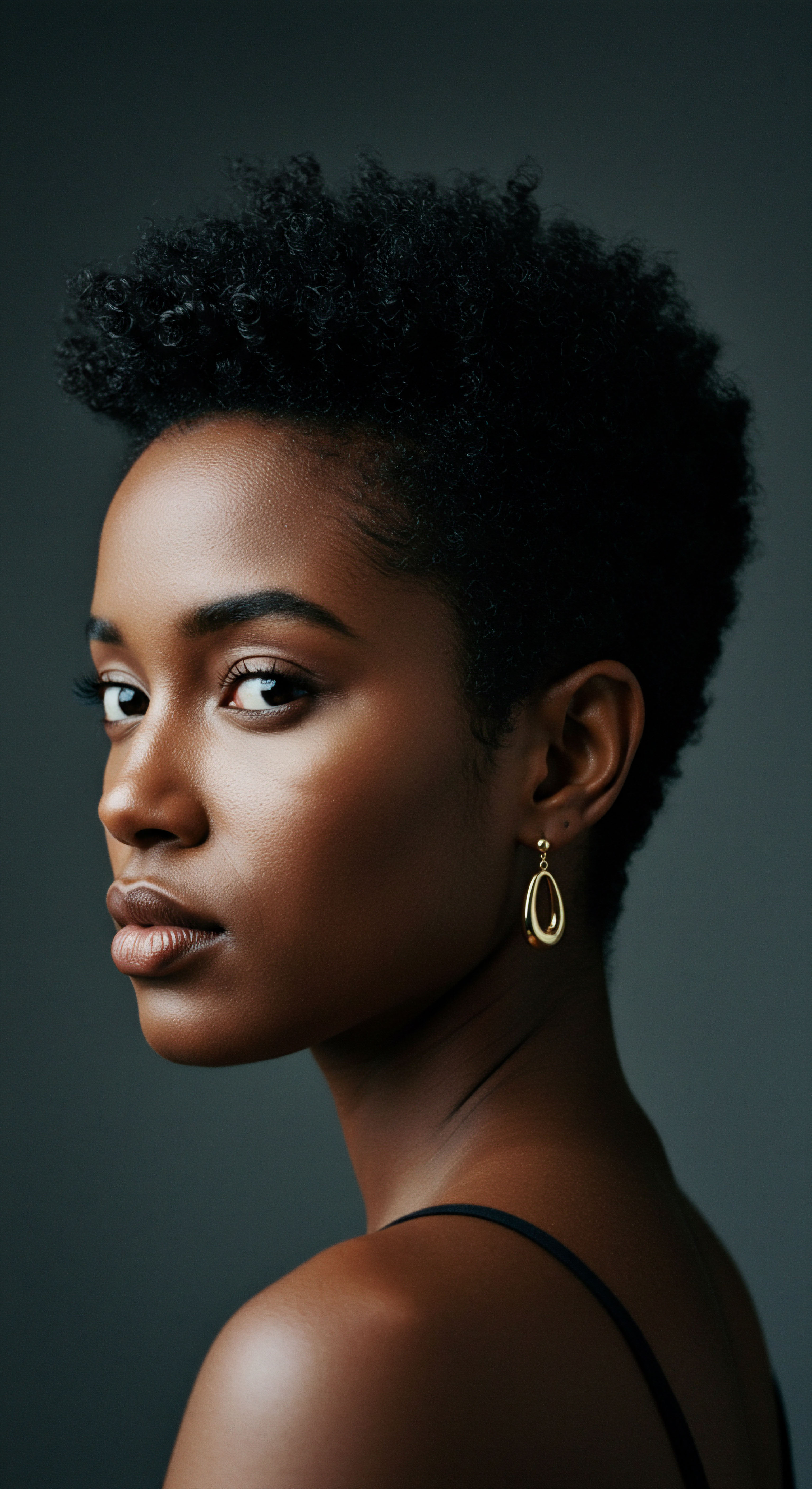
What is Hydrolyzed Silk Protein and How Does It Function?
Hydrolyzed silk protein, a refined version of natural silk, consists of peptides and amino acids. The key to its utility in hair care lies in its reduced molecular size. Original silk proteins are far too large to enter the hair shaft beyond the outermost cuticle.
Through hydrolysis, these proteins are broken down, making them small enough to potentially pass through the cuticle and interact with the hair’s internal structure. This interaction is thought to offer temporary strengthening and conditioning.
The mechanism by which these smaller proteins exert their influence is multifaceted. They can form a protective film on the hair surface, which helps to smooth the cuticle and reduce moisture loss. This film also imparts a silky feel and improves light reflection, contributing to a healthy sheen.
Additionally, some research suggests that the lower molecular weight fragments can temporarily adhere to damaged areas within the cuticle, providing a temporary patch that strengthens the hair and reduces porosity. This temporary adhesion can improve the hair’s elasticity, making it less prone to breakage during styling or manipulation.
Hydrolyzed silk protein, through its reduced molecular weight, aims to condition hair by forming a protective film and temporarily reinforcing the hair’s outer layers.
Consider the difference between applying a thick blanket to a window and repairing a crack in the glass. The blanket (large, unhydrolyzed protein) offers surface protection and warmth, but does not truly mend the underlying issue. Hydrolyzed proteins, by being smaller, are designed to be more like a sealant for minor cracks, offering a more intimate interaction with the hair’s structure. This distinction is vital for understanding realistic outcomes from protein treatments.
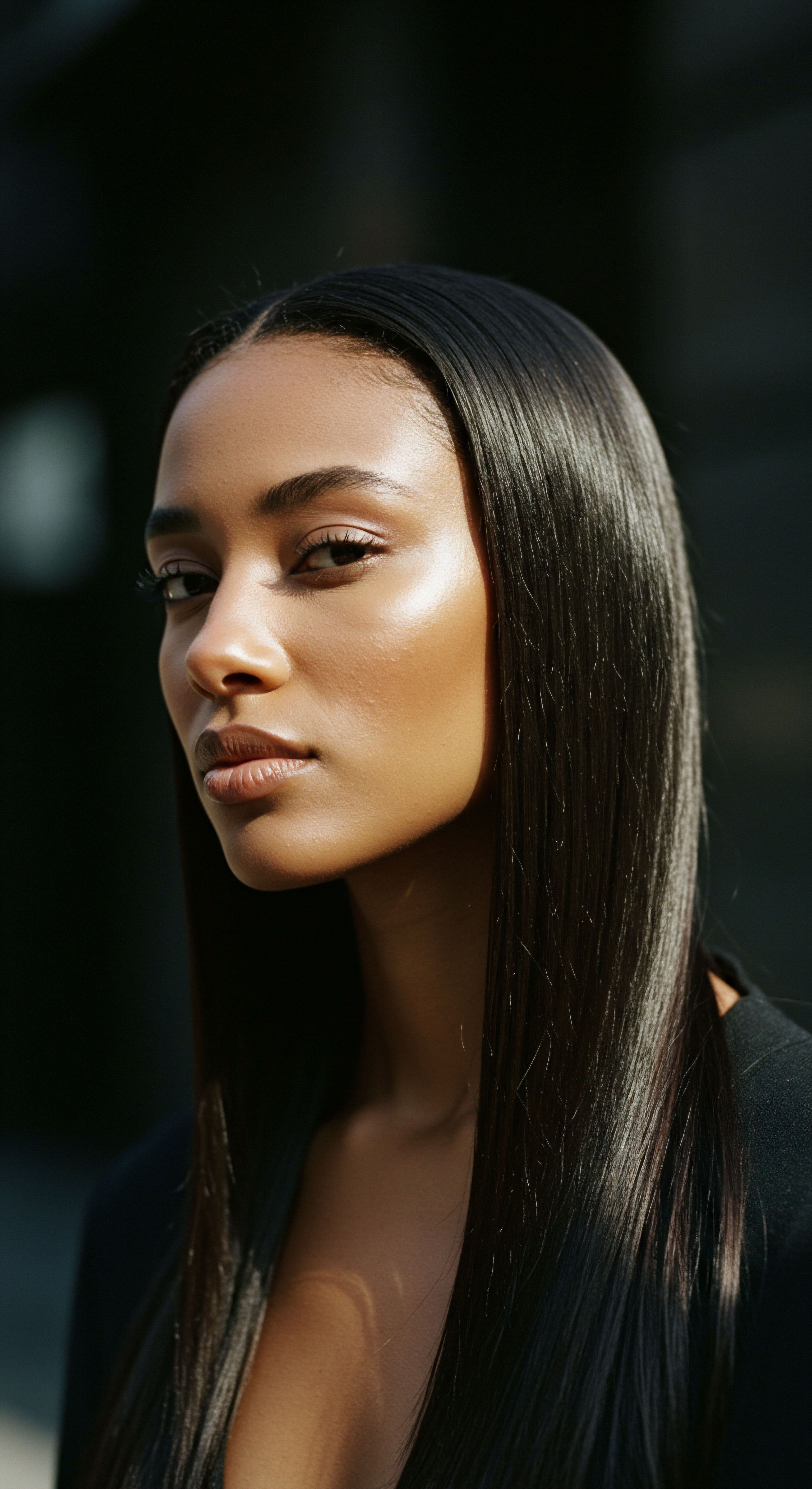
Are There Limitations to Topical Protein Absorption?
Despite the claims of deep penetration, the reality of topical protein absorption into the hair shaft is more intricate than often presented in marketing. The hair’s natural defenses, particularly the cell membrane complex (CMC) and the tightly bound structure of the cortex, present significant barriers. While low molecular weight hydrolyzed proteins can certainly interact with the hair, the extent to which they truly penetrate into the deeper cortex for “internal benefits” remains a subject of ongoing scientific discussion and depends heavily on factors like molecular size, hair damage, and application conditions.
Research indicates that proteins, even those hydrolyzed to smaller sizes, primarily deposit on the hair’s surface and interact with the cuticle. Some studies suggest that certain low molecular weight peptides can penetrate into the outer layers of the cortex, especially in hair that is already damaged and thus more porous. However, the idea of these proteins fundamentally rebuilding or “repairing” the internal keratin structure of the cortex from the outside in a significant, lasting way is often an overstatement of the scientific findings. The benefits observed are often related to conditioning, strengthening the cuticle, and providing temporary support against external stressors, rather than a permanent structural alteration deep within the hair.
This understanding is not to diminish the utility of hydrolyzed silk proteins. Their ability to improve the hair’s feel, manageability, and appearance is well-documented. However, it grounds our expectations in scientific reality. The ritual of applying these products offers tangible, immediate benefits, even if the depth of their internal reach is less profound than some might hope.
- Hydrolysis ❉ A process that breaks down large protein molecules into smaller peptides and amino acids.
- Film Formation ❉ The creation of a thin, protective layer on the hair surface by deposited ingredients.
- Cuticle Adhesion ❉ The temporary binding of protein fragments to the hair’s outermost layer.
| Protein Type Intact Proteins (e.g. untreated silk) |
| Molecular Weight (Daltons) 10,000 |
| Primary Interaction with Hair Surface film formation, minimal penetration |
| Protein Type Hydrolyzed Proteins (medium MW) |
| Molecular Weight (Daltons) 1,000 – 10,000 |
| Primary Interaction with Hair Cuticle adhesion, some outer cortical interaction |
| Protein Type Hydrolyzed Proteins (low MW) |
| Molecular Weight (Daltons) |
| Primary Interaction with Hair Cuticle penetration, limited outer cortical entry |
| Protein Type Lower molecular weight generally correlates with greater potential for hair shaft interaction. |

Relay
Stepping beyond the immediate touch and feel of our hair care, we arrive at a more profound contemplation of its underlying mechanisms. The question of whether hydrolyzed silk proteins truly penetrate the hair shaft for internal benefits calls for a deeper, more scientific exploration, one that acknowledges the complexities often overlooked in casual conversation. This section delves into the rigorous scientific investigations that shed light on protein-hair interactions, examining molecular weight, the hair’s natural barriers, and the specific conditions under which any significant internal engagement might occur. It is a conversation where the tangible meets the theoretical, where daily practice meets laboratory discovery.
The effectiveness of hydrolyzed silk proteins in hair care hinges significantly on their Molecular Weight. Proteins, by nature, are large, complex molecules. For them to pass through the tightly packed layers of the hair’s cuticle and into the cortex, they must be broken down into sufficiently small fragments. This is precisely the purpose of hydrolysis.
The smaller the molecular weight of the hydrolyzed protein, the greater its theoretical potential to penetrate beyond the hair’s surface. However, “penetration” itself is a spectrum, ranging from mere surface adsorption to partial entry into the cuticle, and then to deeper engagement with the cortex.
Hair, particularly healthy hair, possesses formidable natural barriers. The cuticle, with its overlapping scales, and the cell membrane complex (CMC) that binds these cells together, act as a sophisticated defense system. These barriers are designed to protect the hair’s internal structure from environmental aggressors and chemical insults.
While damaged hair, with its lifted cuticles and increased porosity, may present more opportunities for external substances to enter, even then, the depth of penetration is often limited. The hair’s natural resistance to foreign material means that a substantial, lasting internal repair through topical application remains a considerable scientific hurdle.

Does Molecular Weight Determine Hair Penetration?
The concept of molecular weight is a central pillar in understanding how cosmetic ingredients interact with hair. In the context of proteins, it refers to the size of the protein fragments after hydrolysis. Intact silk proteins are very large, far too large to enter the hair shaft. Hydrolysis reduces these large molecules into smaller peptides and amino acids.
The prevailing scientific consensus suggests that for a molecule to penetrate the hair shaft, particularly the cortex, its molecular weight generally needs to be below a certain threshold. While exact figures can vary depending on the specific protein and hair condition, many studies indicate that fragments with molecular weights below 1,000 Daltons (Da) have a greater chance of penetrating the cuticle, and even then, deep cortical entry is still challenging.
A study published in the International Journal of Cosmetic Science explored the penetration of different molecular weight hydrolyzed keratins into hair fibers. This research, which included textured hair that had been chemically straightened, revealed that Low Molecular Weight Compounds (around 221 Da) Were Able to Penetrate Deep into the Hair Cortex, leading to a significant increase in the hair’s cross-sectional area, suggesting internal deposition. Conversely, mid-range (approximately 2,577 Da) and high molecular weight (approximately 75,440 Da) peptides primarily adsorbed onto the hair surface or only slightly penetrated the outer layers of the fiber. This empirical observation underscores that molecular size is a critical determinant, with smaller fragments showing a more pronounced ability to move beyond the cuticle.
However, it is crucial to temper this understanding with the context of hair damage. The study noted that this deeper penetration was observed in chemically relaxed textured hair, which inherently possesses a more compromised cuticle and increased porosity due to the chemical process. Healthy, intact hair presents a much more robust barrier. Therefore, while low molecular weight hydrolyzed proteins possess the capacity for deeper interaction, the extent of this interaction in everyday application on varied hair types, particularly those with a healthier cuticle, may differ.
Scientific inquiry reveals that only very low molecular weight hydrolyzed proteins exhibit a capacity for deeper hair shaft penetration, particularly in compromised strands.
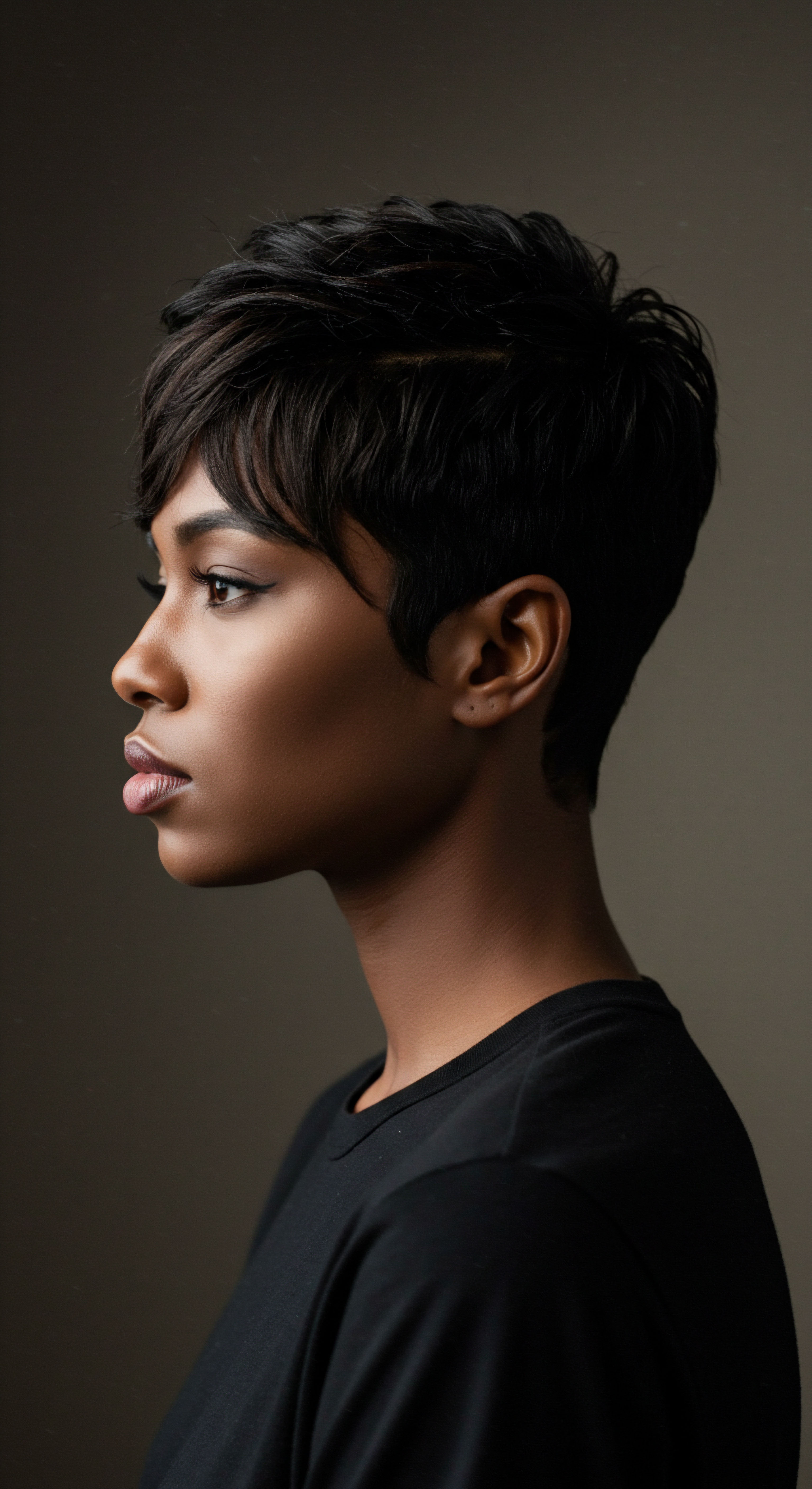
What is the Extent of Internal Benefit?
The term “internal benefits” can sometimes be misconstrued in cosmetic language. While hydrolyzed silk proteins, particularly those with low molecular weights, can penetrate the hair shaft to some degree, their action is more akin to a temporary reinforcement rather than a complete biological repair. They can temporarily fill voids within the damaged cuticle and outer cortex, providing a scaffolding that enhances the hair’s strength and elasticity. This can reduce breakage and improve the hair’s overall feel and appearance.
For instance, the presence of these proteins can improve the hair’s tensile strength, making it more resistant to stretching and snapping. They can also help to retain moisture within the hair shaft by reducing porosity, leading to softer, more pliable strands. These are significant and valuable benefits, especially for textured hair which often experiences challenges with dryness and fragility.
However, these effects are typically temporary, lasting until the next wash or until the deposited proteins are removed by environmental factors or styling. The hair’s fundamental keratin structure, being non-living, does not undergo a permanent transformation.
The application of these scientific insights to textured hair care holds particular importance. Given the structural predispositions of textured hair to dryness and breakage, even temporary improvements in strength, elasticity, and moisture retention offered by hydrolyzed silk proteins are highly advantageous. The conversation shifts from a simplistic “does it penetrate?” to a more nuanced “how does it interact, and what tangible, if temporary, improvements does that interaction offer?” It becomes about understanding the specific mechanisms of action and leveraging them for optimal hair health.
- Molecular Weight ❉ A measure of the size of a molecule; smaller molecules (low molecular weight) generally penetrate hair more readily.
- Cell Membrane Complex (CMC) ❉ A lipid-rich layer between cuticle cells that acts as a barrier to penetration.
- Tensile Strength ❉ The resistance of hair to breaking under tension, improved by protein treatments.
| Hair Layer Cuticle Surface |
| Accessibility to Proteins High (adsorption, film formation) |
| Primary Benefit of Protein Interaction Smoothing, shine, friction reduction |
| Hair Layer Cuticle Interior |
| Accessibility to Proteins Moderate (low MW penetration) |
| Primary Benefit of Protein Interaction Temporary strength, reduced porosity |
| Hair Layer Outer Cortex |
| Accessibility to Proteins Limited (very low MW, damaged hair) |
| Primary Benefit of Protein Interaction Temporary internal support, elasticity |
| Hair Layer Deep Cortex |
| Accessibility to Proteins Very Limited/Negligible |
| Primary Benefit of Protein Interaction Minimal long-term structural alteration |
| Hair Layer The depth of protein interaction is inversely proportional to molecular size and directly influenced by hair damage. |
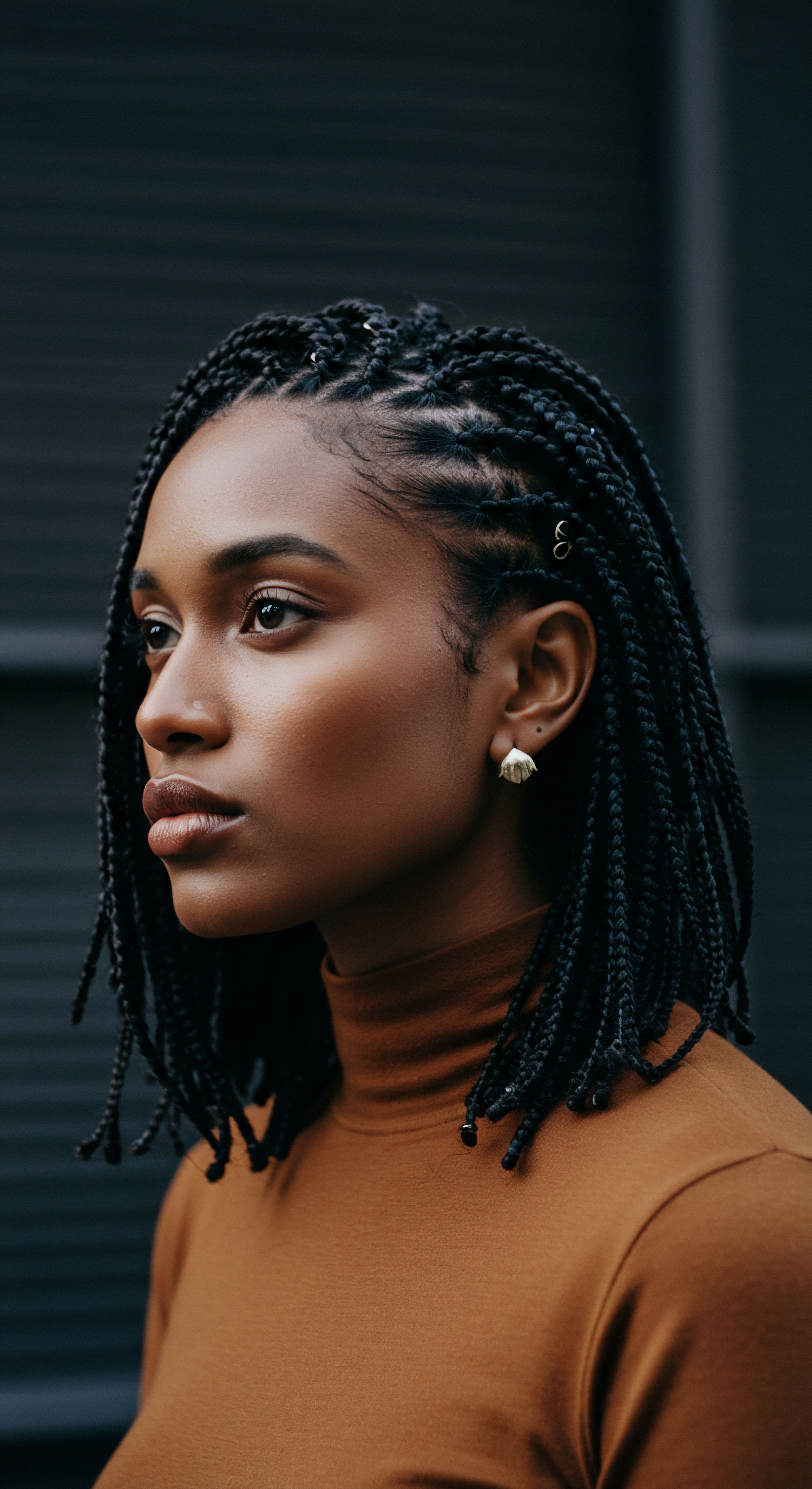
Reflection
Our exploration into the journey of hydrolyzed silk proteins within the hair shaft reveals a narrative rich with scientific inquiry and the enduring human desire for well-being. It is a story not of simple penetration, but of complex interactions, where the delicate dance of molecular size meets the resilient architecture of hair. We have seen that while the promise of deep, lasting internal repair might stretch the bounds of current scientific understanding for topical applications, the tangible benefits of hydrolyzed silk proteins are undeniable. They offer a comforting embrace to compromised strands, enhancing their resilience, improving their texture, and restoring a vibrant appearance.
This understanding encourages a thoughtful approach to hair care, one that values both the allure of innovation and the grounded wisdom of scientific reality. It reminds us that true care lies in appreciating the nuanced capabilities of our chosen ingredients, celebrating the visible improvements they bring, and honoring the unique qualities of our hair, whether it coils, curls, or flows.
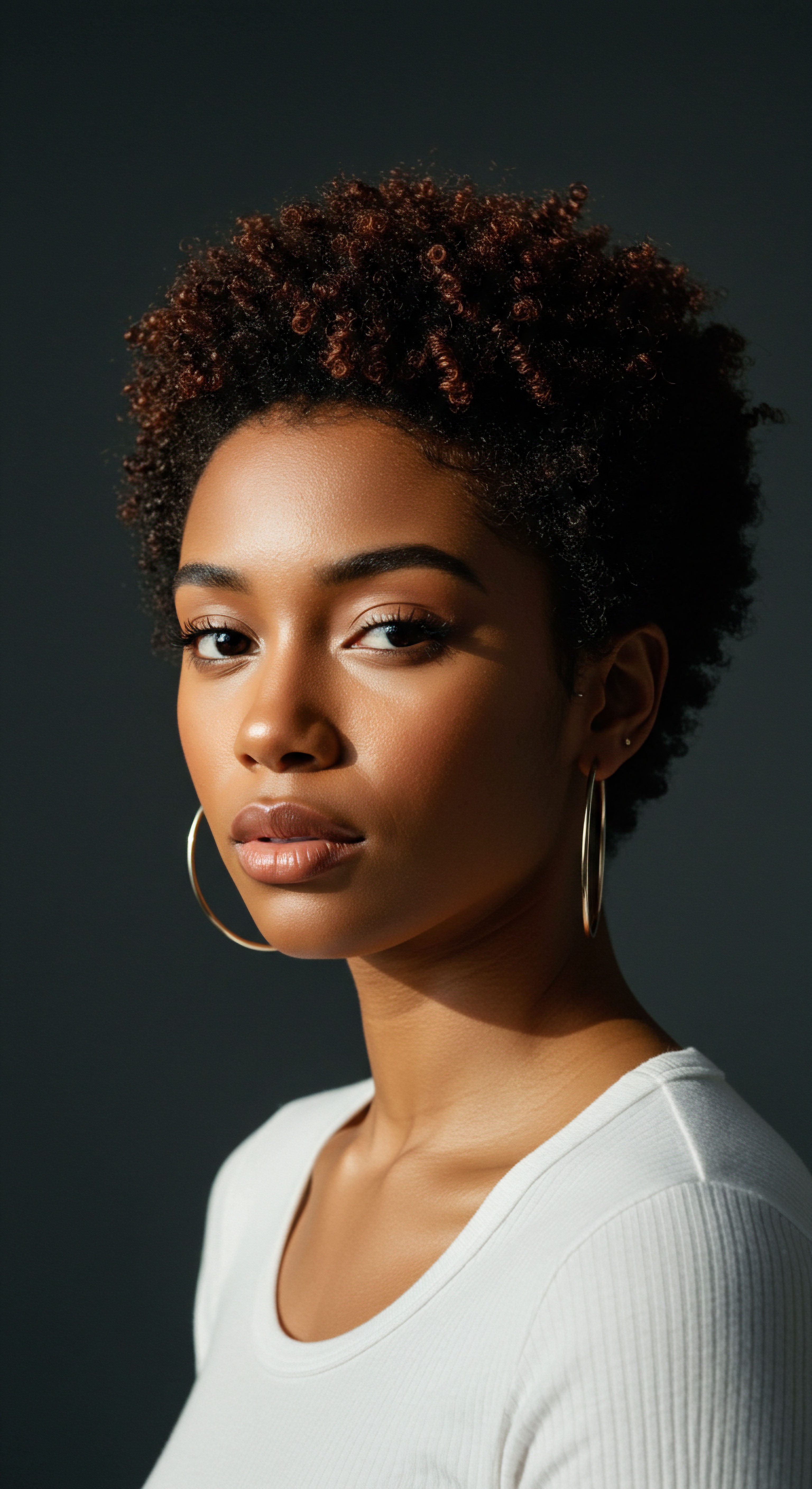
References
- Malinauskyte, E. et al. “Penetration of different molecular weight hydrolysed keratins into hair fibres and their effects on the physical properties of textured hair.” International Journal of Cosmetic Science, vol. 43, no. 1, 2021, pp. 26-37.
- Barel, André O. and Howard I. Maibach, editors. Handbook of Cosmetic Science and Technology. CRC Press, 2001.
- Sakamoto, Kazutami, et al. editors. Handbook of Cosmetic Science and Technology. Taylor & Francis Group, 2022.
- Rosen, Meyer R. editor. Harry’s Cosmeticology. 9th ed. Chemical Publishing Company, 2015.
- Johnson, Dale H. editor. Hair and Hair Care. CRC Press, 1997.
- Robbins, Clarence R. Chemical and Physical Behavior of Human Hair. 5th ed. Springer, 2012.
- Zviak, Charles, and Robert L. Schmitt. The Science of Hair Care. Marcel Dekker, 1986.